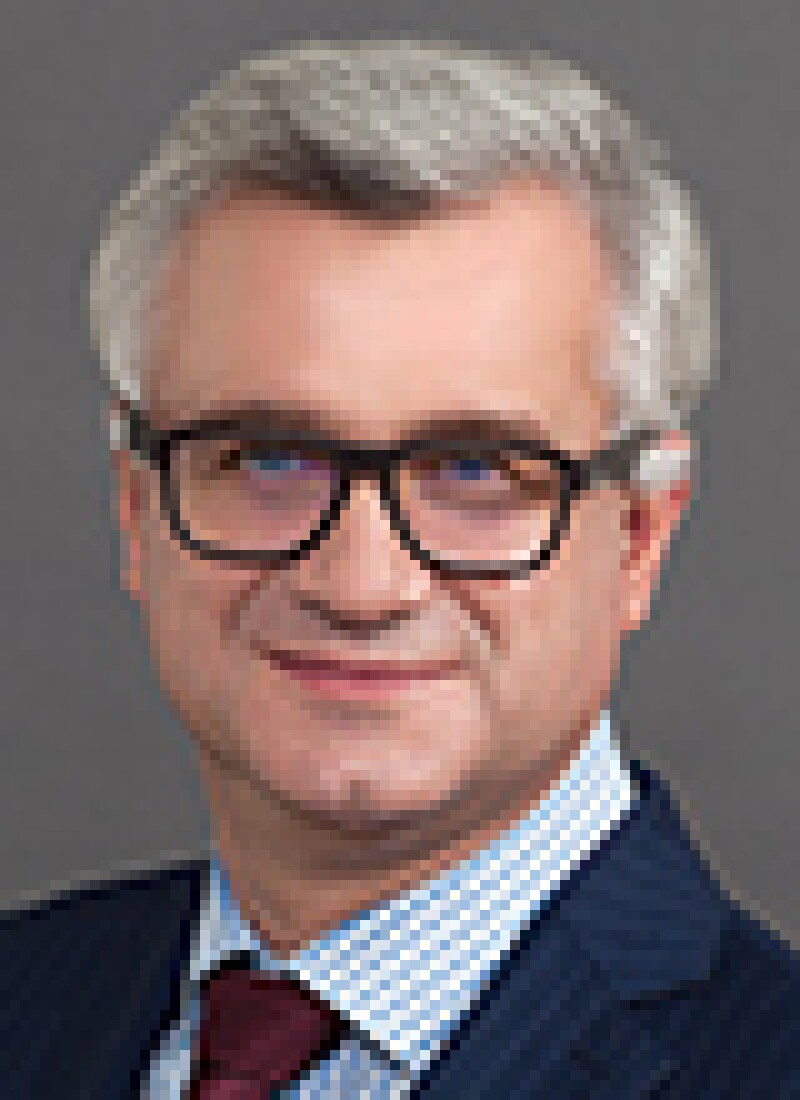Marcin Krakowiak, Rafał Hajduk and Tomasz Kalicki, Domański Zakrzewski Palinka
SECTION 1: Market overview
1.1 Please provide an overview of the project finance market in your jurisdiction.
Classical project finance (ie, one without recourse to sponsors) is rather rare in Poland. A common way to proceed in project finance transactions in Poland is to form a special purpose vehicle (SPV) (usually a limited liability company), which raises funds and is responsible for implementing the project. However, the financing entities operating in Poland usually require project sponsors to provide guarantees, so recourse to sponsors does exist, to a lesser or greater extent.
In the main, financing concerns new projects. Bonds, including income bonds, are permitted, though they are relatively rarely used in project finance projects. Loans given by banks are much more common, while in bigger projects these are usually syndicated loans.
As regards the private sector, structures similar to project finance are used in real estate projects (office buildings, warehouses, etc.) and developer projects. Project finance in the infrastructure sector (including the public one) is used in public private partnerships (PPP) in Poland. Project finance is applied in Poland in energy projects, particularly combined heat and power projects related to waste management and wind energy projects. It is also used in transport infrastructure projects, including construction of toll motorways and car parks.
The project finance loan market is relatively underdeveloped. The project finance (including PPP) potential in Poland is great but unused. In practice, project finance requires great expertise, including the involvement of specialised analysts who assess numerous risks for particular parties to the transaction to allocate them properly. In addition, a great portion of money for investment projects originated from the EU over the past few years, so it was not necessary to use project finance on a wider scale in public investment projects.
1.2 What is the composition of the market in terms of the types of active lending institutions and has this been evolving?
PKO Bank Polski (the largest Polish bank) has been active in providing debt finance for infrastructure projects. Pekao (the second-largest Polish bank where a major stake was recently acquired by the State Treasury) and some banks from international financial groups have also been active. Bank Ochrony Środowiska has been involved to a great extent in providing funds to the wind energy sector, which used to be very popular in terms of project finance before the Act on Wind Farm Projects entered into force.
In connection with the Strategy for Sustainable Development (see section 1.3), public entities associated with the Polish Development Fund, may be expected to increase their involvement, eg. Bank Gospodarstwa Krajowego.
1.3 Please describe any major current projects or initiatives that are influencing activity.
Last year, the Polish government resolved to adopt the Strategy for Sustainable Development (SSD), which set the medium-term directions for Poland's economic development until 2020. Digital security and informatisation were emphasised strongly in the SSD. The total expenditures in the pursuit of the SSD will amount to PLN2.1 trillion ($611 billion) until 2020, including PLN1.15 trillion to be provided by the state and local governments and PLN236 billion by the EU. The remaining funds are to come from private sources, particularly national and international financial institutions and businesses.
The Polish Development Fund (PDF), formed in April 2016, is one of the tools supposed to support infrastructure projects and investments. It is a Polish development financial institution, a state-owned financial group offering instruments for the development of businesses, local authorities and private individuals and investing in Poland's social sustainability and economic growth.
One of the strategic projects in the SSD is the Programme for Silesia, which contains an integrated set of investment and soft activities and is a tool to coordinate national and European financing sources dispersed among numerous programmes and institutions. The document covers more than 70 undertakings in different fields that are to be a powerful development stimulus for Silesia. The value of the activities and instruments is about PLN40 billion.
As regards government initiatives that have been announced, attention should be paid to information on the development of work associated with plans to build a Central Airport with of an initial capacity of 45 million passengers per year. Additionally, the Ministry of Energy has devised several financial-business models for the construction of the first nuclear power plant in Poland at an estimated cost of PLN12-14 billion per 1000MW. At the Ministry, an analysis was made of the various ownership structures and financial variants, while discussions are still underway on the matter.
SECTION 2: Transaction structures
2.1 Please review some recent notable transactions involving your market and outline any interesting aspects in their structures.
One of the most noteworthy projects has been the Waste Management System for the City of Poznań project. The project involved designing, constructing and operating an incineration plant on a PPP basis using EU funds as part of an availability payment scheme. The project value exceeded PLN3 billion, and capital expenditures amounted to approximately PLN700 million. This is the only Polish and the largest European PPP project co-financed by the EU (the amount of the EU grant was PLN352 million). The project required: obtaining favourable tax rulings for the City of Poznań; structuring the project in terms of public debt classification, according to Eurostat methodology; preparing necessary tender documentation and PPP agreement; preparing application for EU financial assistance; updating the feasibility study; and agreeing the allocation of risks in project finance documents.
2.2 What might the projects above mean for the market and have you noted other noteworthy developments in the way project finance transactions are being structured for a) energy projects and b) infrastructure development?
With the revision of the existing and introduction of new support systems in the energy sectors (see 3.3), we expect project finance in the Polish energy sector to be revived, as these systems will provide frameworks under which classical project finance structures could be implemented. Currently, we see a trend to provide equity, financing instruments with risk profile and project documentation structure similar to debt project financings to entities which are already highly leveraged and reluctant to take additional debt. Such financings are provided at project level to ring fenced SPVs and in many respects, mimic classical project finance structures.
SECTION 3: Legislation and policy
3.1 Describe the key legislation and regulatory bodies that govern project financing in your jurisdiction.
Key legislation for infrastructure projects is the Public Procurement Law and the Public-Private Partnerships Act (PPP Act). Recently, the leading role in setting the pace in projects in this respect has been played by the Ministry of Development (soon to become the Ministry of Investment and Development). Functions as regards supervision of banking activity are fulfilled by the Polish Financial Supervision Authority.
3.2 Have there been any recent changes to regulations or regulators that may impact the finance structuring in terms of guarantee and security regimes, local currency rules and foreign investment restrictions?
On January 1 2018, changes came into effect to the Act amending the Act on Suretyships and Guarantees Granted by the State Treasury. Businesses are to be provided with constant, stable access to preferential guarantees, which will facilitate planning to use guarantee instruments in the long term. According to government estimates, in practice Bank Gospodarstwa Krajowego will extend guarantees for about PLN9 billion per year to micro, small and medium-sized businesses.
Otherwise, there have been no regulatory changes concerning security or foreign exchange and foreign investment issues which may substantially affect the structuring of project finance financing.
3.3 Please describe the regime governing renewable energy investment.
Up until 2016, Poland had a RES support regime based on green certificates, similar to the British ROC. Until a certain moment, the system proved to be quite successful. The market provided long term offtake contracts for both black power and green certificates and on the back of these it was possible to finance RES projects (on-shore wind in particular) on a non-recourse, project finance basis. The system failed however when a significant oversupply of certificates appeared, which resulted in a dramatic fall in green certificate market prices and which in turn caused a wave of terminations of long-term certificate offtake contracts. Since 2016, the green certificate system has been replaced by an auction-based feed-in premium system, but this is being rolled out slowly, with the government proposing to introduce major changes in 2018 to the auction system rules in order to correct the system's initial imperfections.
3.3 Does your jurisdiction have incentive schemes in place for various types of energy or infrastructure project development?
It does, especially in the area of energy. The RES support system is described above. There is a support system for cogeneration (currently certificates based, to be phased out in 2018 and replaced by a new, auction based system) and, very importantly, at the end of 2017 Poland adopted the Capacity Market Bill, which will introduce an auction-based Capacity Market in Poland (similar to the one in the UK) with the first auctions to take place in 2018.
3.4 Are there any rules, legislation or policy frameworks under discussion that may impact project finance in your jurisdiction?
The SSD (see Section 1.3) mentions a new partnership between public institutions, business, science and society. Infrastructure projects in Poland may produce greater profitability, so the SSD provides for intensifying work on infrastructure projects that might be interesting to foreign investors.
The Ministry of Development, in cooperation with the Ministry of Finance, Bank Gospodarstwa Krajowego and the PDF, is working on creating a system of financial instruments which will facilitate the implementation of PPP projects. On July 26 2017, the Council of Ministers adopted the "Government Policy for the development of public-private partnerships", which is a specification of actions towards the development of PPP projects.
SECTION 4: Market idiosyncrasies
4.1 Please describe any common mistakes or misconceptions that exist about the project finance market in your jurisdiction.
The public party not being ready to engage professional advisers is deemed to be the biggest challenge faced when infrastructure projects are implemented on a project finance basis in Poland. The process of getting the private sector involved in the financing and operation of economic infrastructure is complicated and rather time-consuming, and, equally importantly, depends on political and social influences.
Polish law governing various aspects of financing infrastructure contains many unclear and imprecise provisions. Important factors affecting the eligibility of government units to participate include structuring a transaction properly to comply with the restrictions imposed by Polish law and the calculation principles used by Eurostat on the one hand, and project bankability on the other. The relevant legal provisions give rise to many doubts about interpretation. There is no established practice that could be reapplied to new projects and there are no forms of contracts and documents (toolkits) to facilitate work during negotiations.
Poor coordination is another problem. The infrastructure development system seems incoherent and hard to manage. Local authorities and municipal and infrastructure companies are not experienced yet, but they are gaining experience about corporate finance and complex agreements. There is also a lack of trust between public and private partners. The unquantifiable regulatory risk is a major obstacle for investors.
4.2 What measures should be taken to best prepare for your market idiosyncrasies?
To successfully implement a project in Poland the complexity of projects and the lack of established practice should be taken into account as key factors. Therefore, an investor should expect that negotiations will take a relatively long time and will involve many advisers. A great portion of money for investment projects has originated from the EU over the past few years, so it has not been necessary to use project finance on a wider scale in public investment projects so far. The public sector is starting to learn about PPPs and project financing now. The relatively high regulatory risk is also important.
SECTION 5: Practical considerations
5.1 How established is the legislative framework and authorities that govern public-private partnerships (PPP) and where have PPP structures most successfully been applied?
Provisions came into effect in Poland in 2009 regulating the conclusion of contracts on PPS and works and services concessions. To a large extent, these provisions implement legal solutions applied in the EU. The provisions were adjusted to the new Directive 2014/23/EU on the award of concession contracts and are closely monitored by the Ministry of Development, which is steadily reinforcing its position as the government entity responsible for developing and monitoring PPP projects in Poland. The proposed amendments to the PPP Act confirm the Ministry of Development's leading role as the competent centre for PPP projects, supporting the development of the PPP market and specific projects in sectors key to the economy (public roads, social infrastructure, etc.).
At present, most projects are carried out by local authorities, who decide to use PPPs in projects to build public roads, public facilities (student residences, public offices), involving energy efficiency (thermos-modernisation of public buildings), and investments in environmental protection. Experience with PPP projects in Poland shows that the projects that were brought to final close were those based on availability payments, where the private party carries the risk of construction and availability (for example, in the construction of a court building in Nowy Sącz and an incineration plant in Poznan).
5.2 What are the key considerations relating to foreign investment into projects as regards insurance and tax structures?
In Poland the notion of warranty and indemnity (W&I) insurance is not common practice as it is still considered too expensive. Such products have, however, been offered in Poland for several years now both by foreign insurers (mostly insurers admitted in the UK) and by insurers established in Poland. Such insurance provides cover for losses arising from a breach of a warranties given in M&A transactions.
5.3 Are there any specific issues creditors should be mindful of regarding a bankruptcy and restructuring scenario?
Bankruptcy: If all of a borrower's assets and future income are encumbered in favour of a creditor, the court will probably dismiss the bankruptcy application. This is because security interest means that the bankruptcy trustee cannot use the encumbered assets to finance the liquidation of the debtor's assets. The bankruptcy trustee can use them only to repay a secured creditor. If the bankruptcy application is dismissed, the creditor can of course recover its receivables by way of court enforcement (or by extra-judicial methods) itself. To avoid the application being dismissed, the creditor may waive part of the security. The above will also be taken into account by the borrower's managers. This is because dismissal of the bankruptcy application may lead to their personal liability, including for the company's trade and tax debts.
Restructuring: It is generally the secured creditor that decides whether it wishes to take part in the restructuring or claim its receivables in court enforcement. Some security may be ineffective, if established within one year prior to the restructuring application being filed. Additionally, according to some judges and authors, in restructuring proceedings, assigning future receivables may be ineffective. According to their view, such assignment prevents the restructuring of the debtor and in court restructuring proceedings, the creditor cannot use them. This is despite the assignment of future receivables being established exactly in the event of payment difficulties, i.e. in the event of bankruptcy or restructuring. This issue has not yet been decided by the Supreme Court. It may be a key challenge for creditors in the near future.
SECTION 6: Outlook
6.1 What are your predictions for the next 12 months in the project development and financing sector and how do you expect legal practice to respond?
The trends in the next 12 months may be set by the SSD objectives. We can expect initiatives to be taken to implement those objectives, including the energy projects and transport infrastructure. The toll motorway network in Poland is still incomplete. As regards the private sector, according to assessments available in the media, real estate and developer projects can be expected. In turn, based on PPP investment plans (mid-2017), there are about 150 projects with a total value of PLN63 billion. Dominant sectors in planned projects are energy efficiency, transport services and infrastructure, sport and tourism, healthcare and public buildings. The majority of projects in this group are low value investments and services (up to PLN50 million, though 13 are projects of over PLN 1 billion each). It seems that in the near future the pace will be set for work on the Central Airport.
About the author |
||

|
|
Marcin Krakowiak Partner and head of the infrastructure and energy practice, Domański Zakrzewski Palinka Warsaw, Poland T: +22 557 86 46 F: + 22 557 76 01 Marcin Krakowiak is a partner and head of the largest infrastructure and energy practice in Poland. He specialises in infrastructure, transport and environmental protection projects. He mainly advises clients in the construction, energy, rail, aviation, manufacturing, telecommunications and road transport sectors. He has advised clients from both private and public sectors on project structuring and risk management, drawing up and negotiating contracts, and dispute resolution. He also advises on leading projects co-financed by state aid, on construction and design processes and in public procurement proceedings. Krakowiak also has extensive experience working with governmental and local government authorities in Poland. Furthermore, he is involved in the implementation of complex undertakings, both domestic and international, such as sector M&A transactions and those implemented by public-private partnerships (PPP), including concessions for works and services advises on undertakings co-financed by EU funds or other state aid in design and construction projects and public procurement proceedings. |
About the author |
||

|
|
Rafał Hajduk Partner, Domański Zakrzewski Palinka Warsaw, Poland T: +22 557 76 33 F: +22 557 76 01 Rafał Hajduk is a specialist in transaction advice and legal services to businesses in the energy sector. He handles all types of projects, for example advice on investments in constructing/upgrading energy infrastructure, project finance, M&A, joint-ventures and on trading in energy, fuels, greenhouse gas emission allowances and related derivatives. Hajduk advises on regulatory and contractual matters and is the author of numerous publications on energy sector regulations and energy sector investments. He has been recommended as a leading individual lawyer and key individual lawyer in the field of energy in rankings published by Chambers and Partners, Legal 500 EMEA, IFLR1000, Best Lawyers and Who's Who Legal. Hajduk was a winner of the International Law Office Client Choice Award in 2012, 2014, 2015 and 2016 in the energy and natural resources category in Poland. He is the official Polish legal counsel to the European Federation of Energy Traders. |
About the author |
||

|
|
Tomasz Kalicki Senior associate, Domański Zakrzewski Palinka Warsaw, Poland T: +22 557 76 87 F: +22 557 76 01 Tomasz Kalicki advises on transactions involving financing and establishing legal security for receivables as well as on M&A transactions, both in Poland and internationally. He also deals with public offerings and regulatory issues in the financial and payment institutions sector. His experience covers drawing up financial documentation (including collateral documents), share purchase agreements and other acquisition related documents as well as legal opinions on regulatory issues, and advising on civil law and commercial law. |
